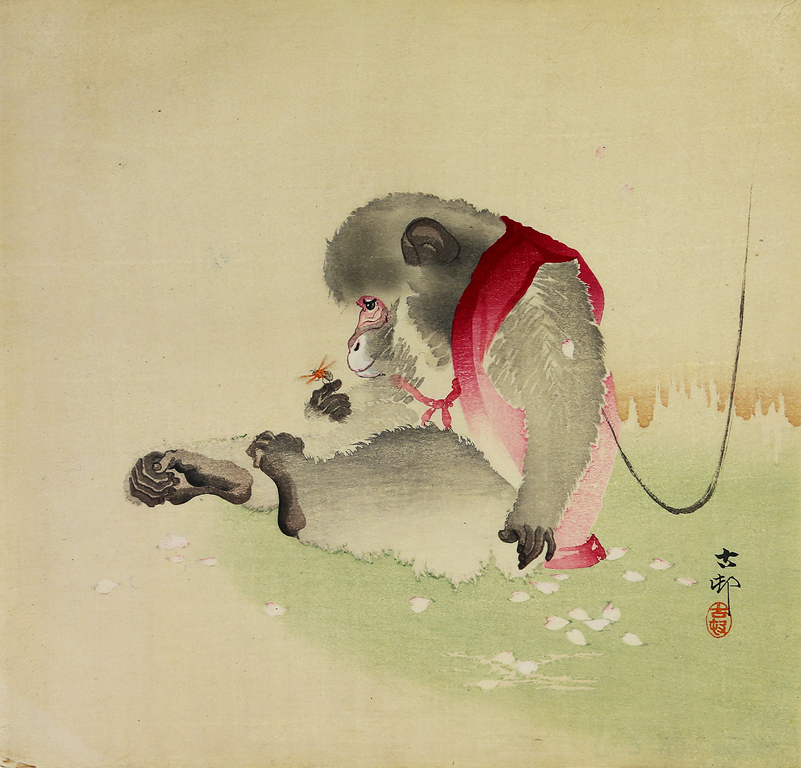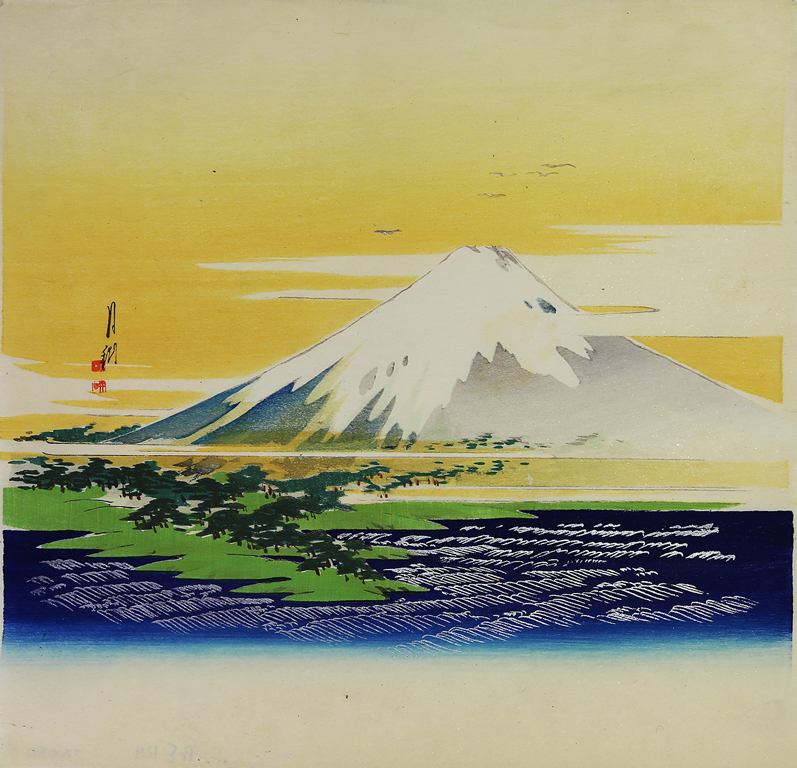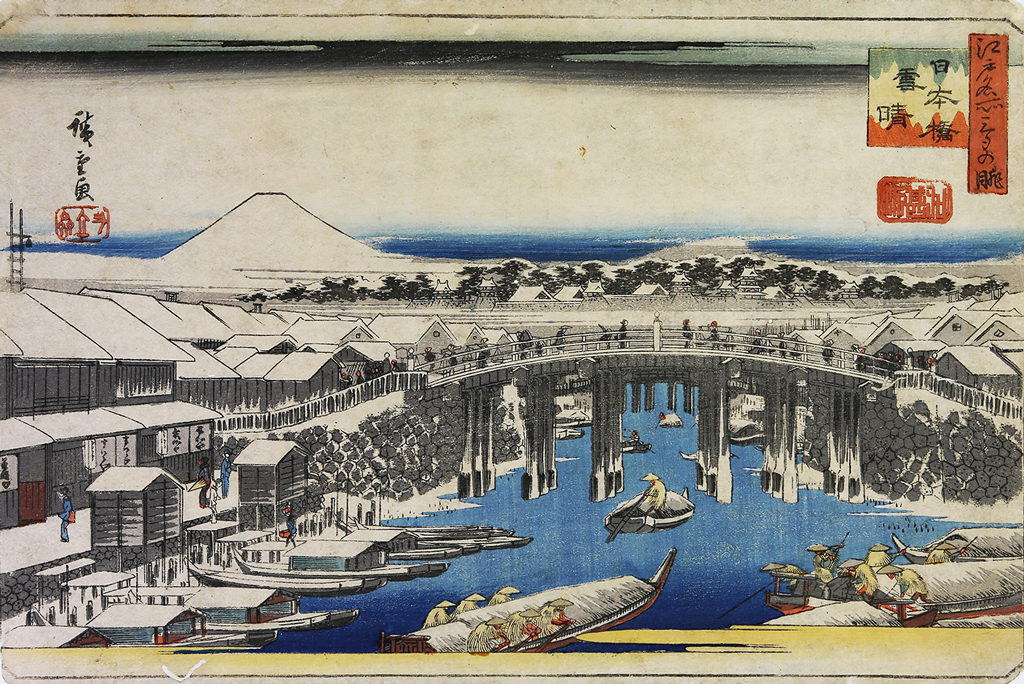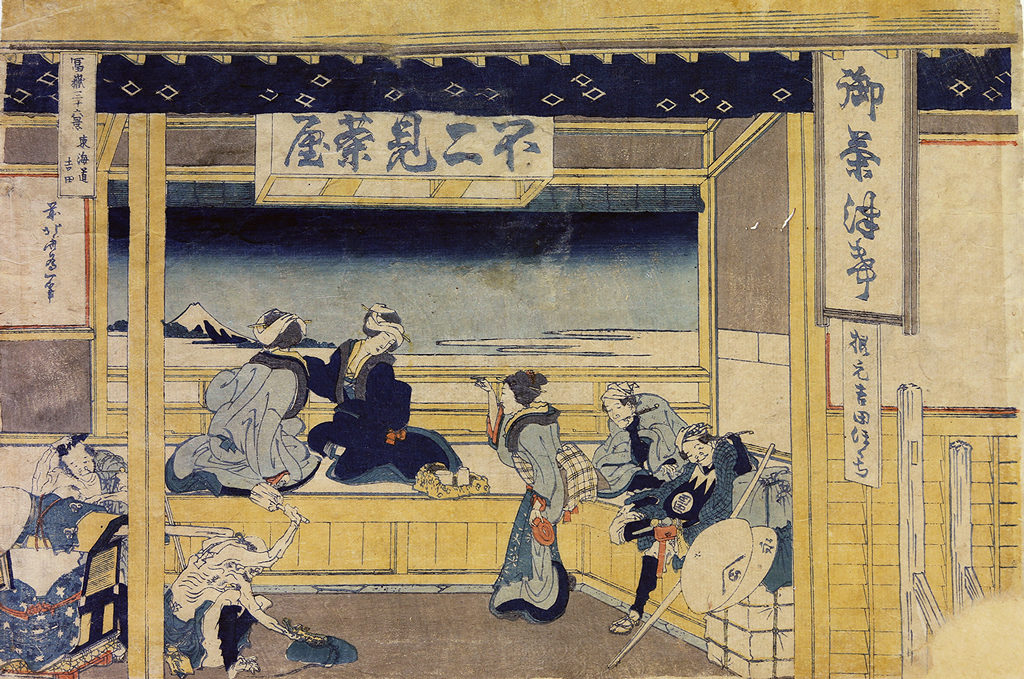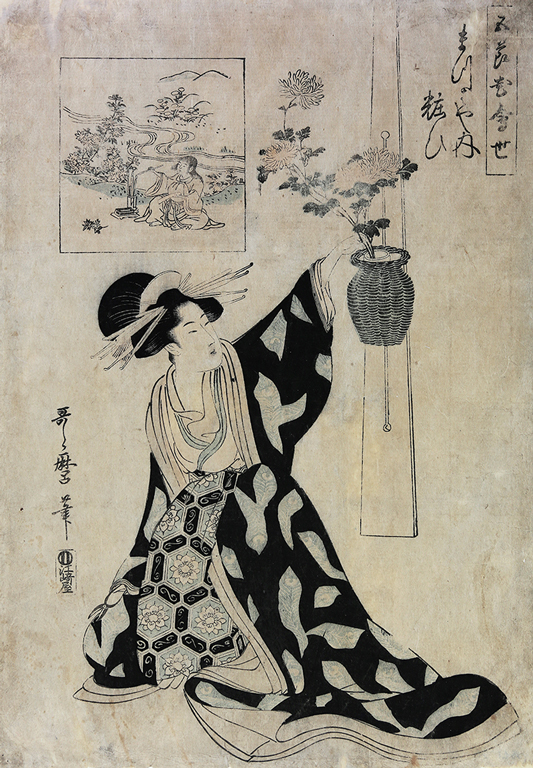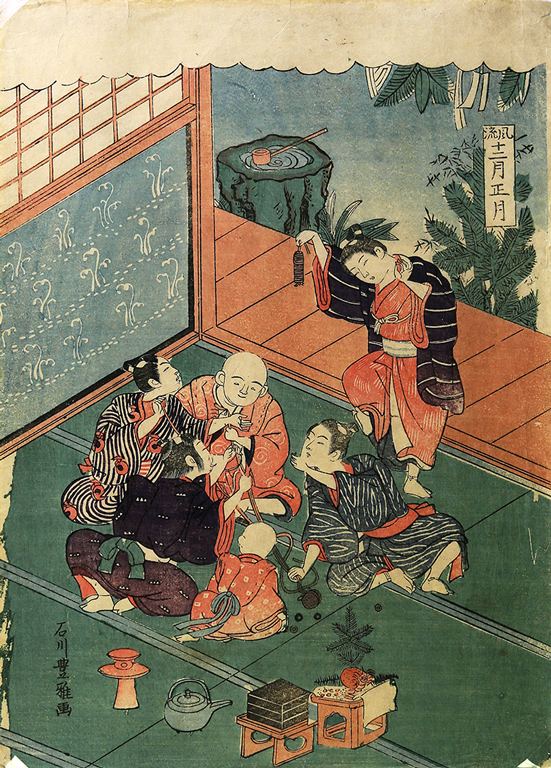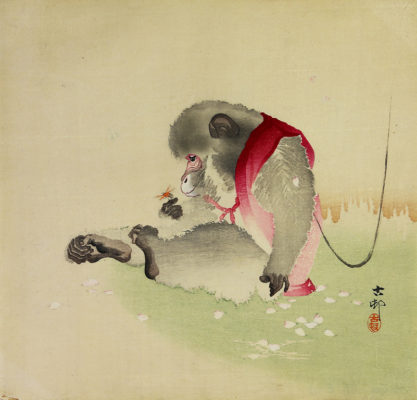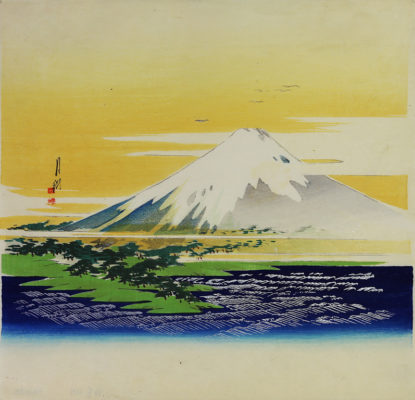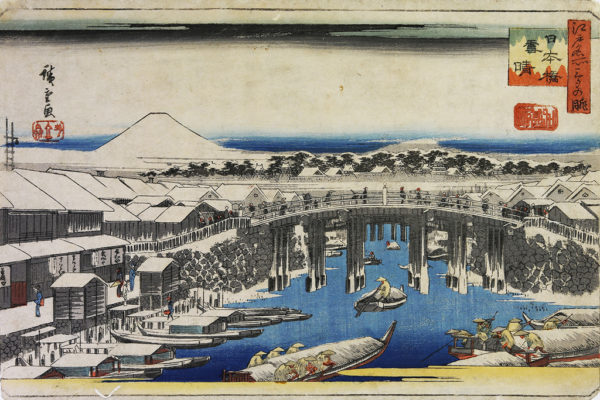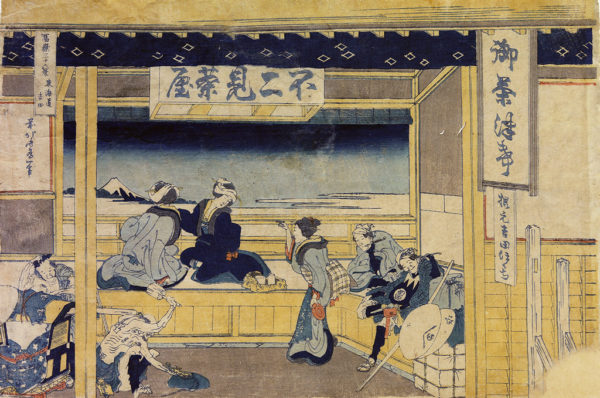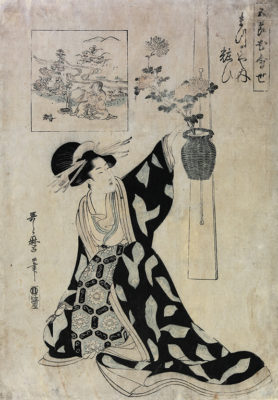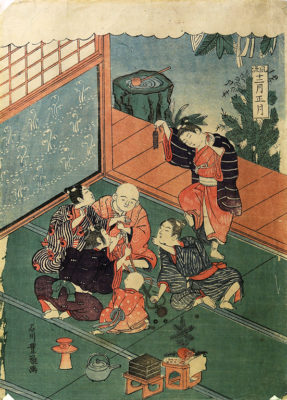The art of ukiyo-e (浮世絵), a particular style of Japanese woodblock prints, began in the city of Edo (now Tokyo) in Japan during the Edo Period (1603-1867).[1] Ukiyo-e prints depict a variety of subjects ranging from lavish urban pleasures to picturesque landscapes including scenes; and they often feature courtesans and their attendants, kabuki actors, tea houses, and scenic views of Mt. Fuji.[2] Because of their sophisticated subject matter, woodblock prints were a popular artistic medium that appealed to a growing and wealthy merchant class in which art and culture were a key means of obtaining status.[3] Ukiyo-e drew upon classical and historic sources while also reflecting current popular trends in Japan.[4] Prints could be mass produced and distributed allowing ukiyo-e artists to build a reputation for themselves and develop a demand for their work.
Although many prominent ukiyo-e artists achieved great fame, these artists can only be credited with creating the actual design for each artwork.[5] In Japan, woodblock prints were created with a team of four individuals, including a publisher, designer, engraver, and printer.[6] Initially a publisher would develop a concept and then commission an artist to design the print on a sheet of paper.[7] This image would be moved to a sheet of transparent paper that was pasted to a block of cherry wood and a master carver would then chisel the block of wood to form the image in the negative.[8] After carving, a printer would cover the wood block with ink, place a sheet of paper over it, and rub the paper onto the inked surface to fully transfer the image.[9]
Initially, ukiyo-e prints were either produced in monochrome or with very few colors, often painted into the final image by hand.[10] In 1765, full poly-chrome prints or nishiki-e (錦絵) first appeared as separate carved blocks came to be used for each color in a print.[11] Prints were typically produced on paper made from mulberry trees, which was sturdy and absorbent.[12] The carved woodblocks withstood numerous reproductions until they wore down, although sometimes the block would be re-cut to continue using the design.[13]
Ukiyo-e woodblock prints were a integral aspect of Edo Japan’s cultural landscape. They were masterfully crafted, affordable, and widely distributed. As a result, many still remain beautifully extant to this day, serving as reminders of a rich artistic tradition that transcends time and place.[14]
-Mandy Prue, Class of 2016
Sources:
[1] “The Floating World of Ukiyo-e,” The Library of Congress, http://www.loc.gov/exhibits/ukiyo-e/intro.html.[2] Hans Olof Johansson. “Ukiyo-e: The Pictures of the Floating World,” 1995.
[3] “The Floating World of Ukiyo-e.”
[4] Ibid.
[5] “Heilbrunn Timeline of Art History,” Woodblock Prints in the Ukiyo-e Style, October 1, 2003,
[6] Ibid.
[7] Ibid.
[8] Ibid.
[9] Ibid.
[10] Ibid.
[11] Ibid.
[12] Ibid.
[13] Ibid.
[14] “The Floating World of Ukiyo-e.”

